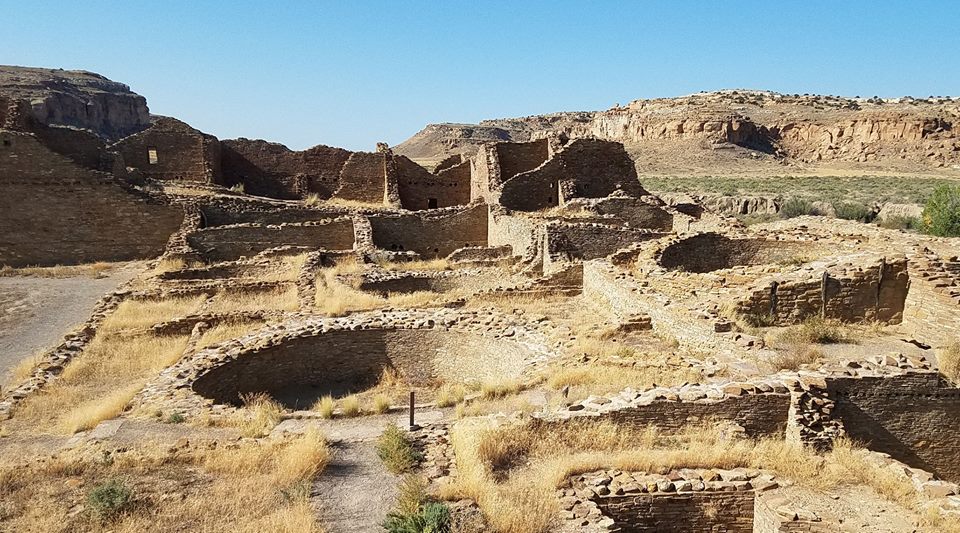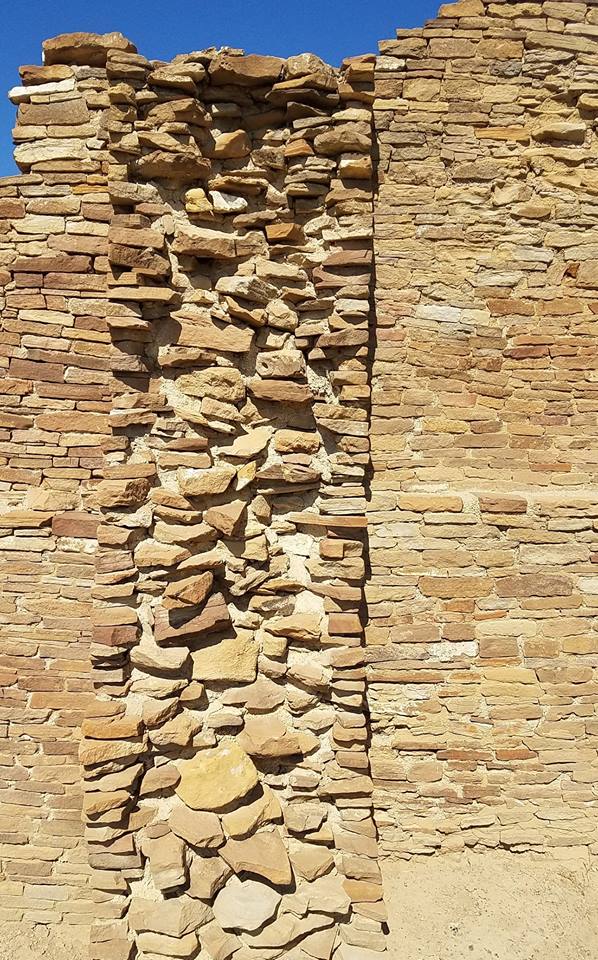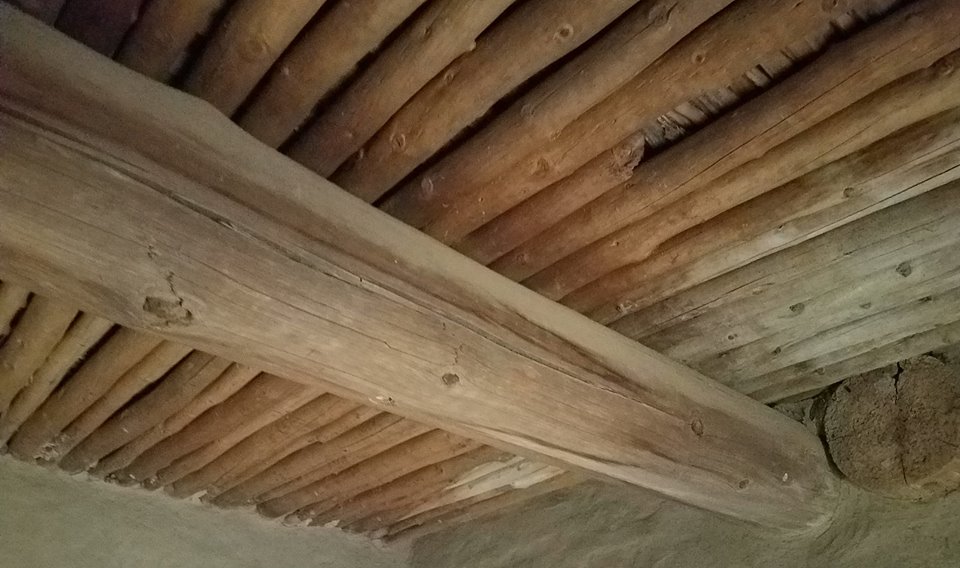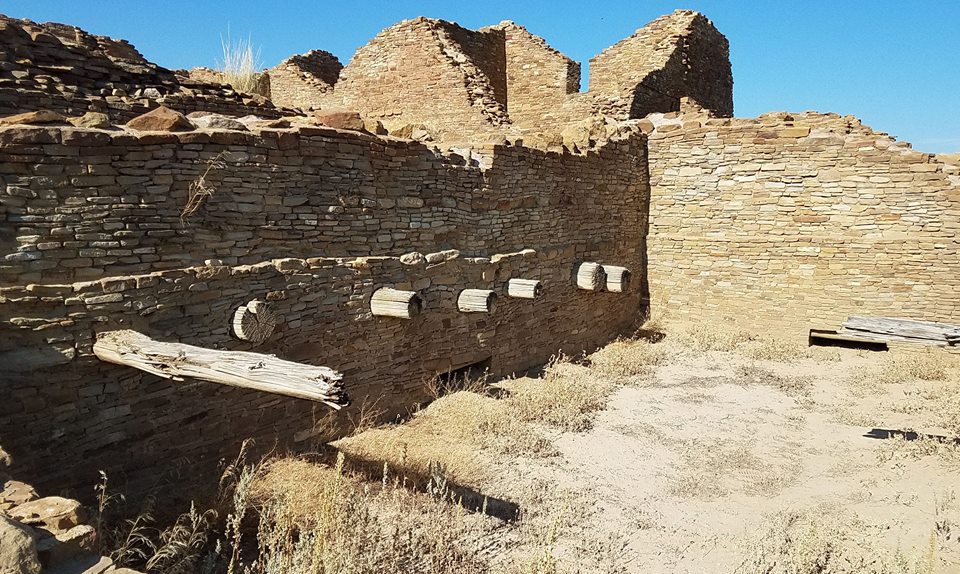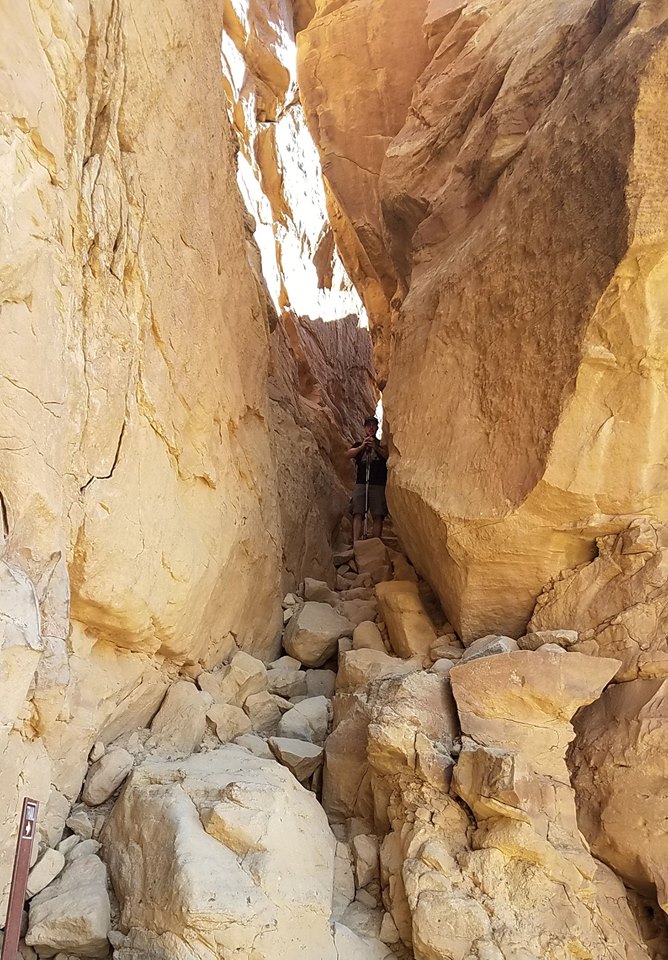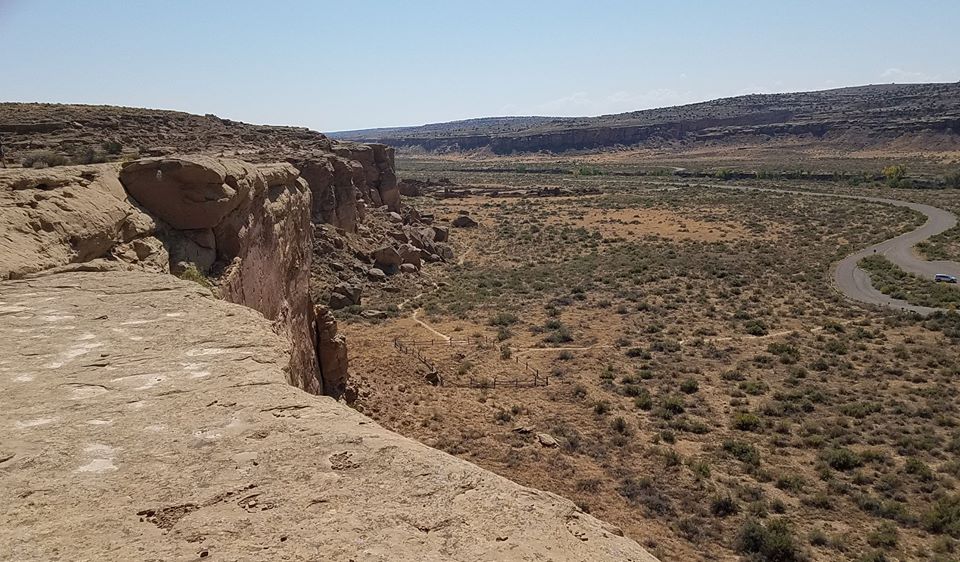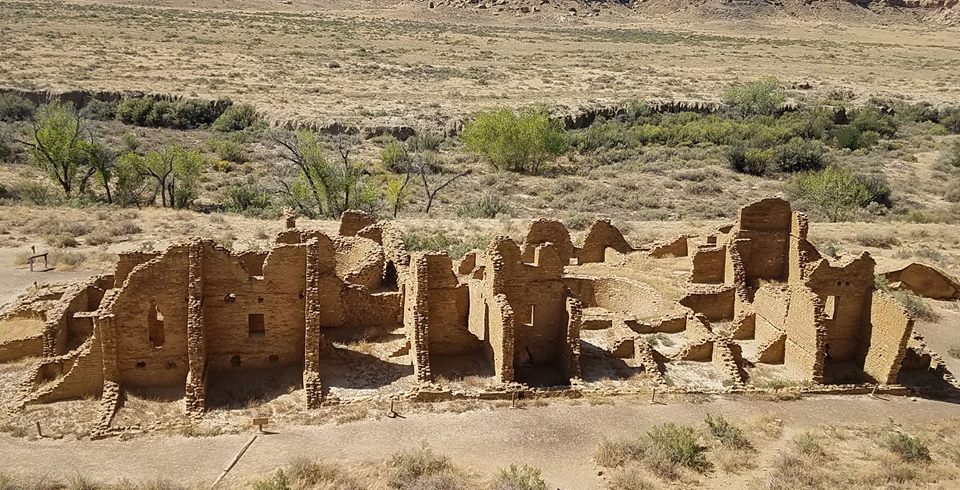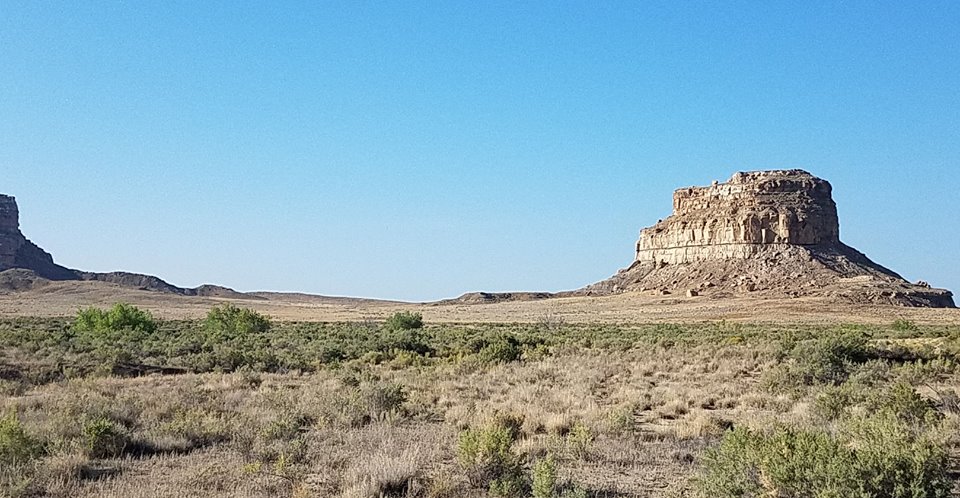Alex and I climbed up to the ridge to get a better view of the valley. You have a fairly arduous climb through a notch, as you see in the first picture and then it is mostly flat. The next picture shows the valley from the ridge, followed by the ruins from the height. Picture #3 shows a butte followed by a kiva, a ceremonial room of the Ancestral Pueblo.
Settlements flourished in Chaco Canyon from around AD 800-1250. Then the people left. Nobody is sure why. Some speculate that climate change was the culprit. It got hotter and dryer around 1250. Others say it might have been warfare. There is evidence of violence and maybe even cannibalism near the end of the period, but there is no genaral agreement among scholars. For whatever reason, the people dispersed.
The structures of Chaco fell into ruins and filled with windblown dirt. The Navajo avoided the ruins, considering them full of evil spirits. A U.S. cavalry detachment came across the place in 1849. Most of the names of the structures date from that time. The cavalry had a Mexican scout. When asked about the ruins, he just gave them Spanish names. Chaco Canyon, for example, just means flat canyon. Pueblo Bonito, means pretty village, while Pueblo de Arroyo means village on the wash.
The structures were build in the shapes of D, oriented toward the cardinal directions. Scholars speculate that astronomy was very important to the inhabitants.They carefully watched the solstices and the equinox. At the winter solstice, they did elaborate ceremonies to coax the sun back. Seems to have worked, at least from their point of view.
My first two pictures shoe Pueblo Bonito and Pueblo de Arroyo.
The structures are made from stacked stone, with outer layers shaped to fit together with little mortar. Inside was filled with coarser stone and rubble. You can see an example in the third picture. The roofs were made from wood. Ponderosa pine timbers formed the supports were carried from far away. The nearest pine forests are sixty miles away. The forth picture shows the mass timber construction.
I learned another part of my knowledge has been overtaken by events on our visit to Chaco Canyon. I learned that it had be built by people called the Anasazi. Today I learned that they are the people formerly known as the Anasazi, now called “Ancestral Pueblos”.
Seems that the name Anasazi is pejorative. It was the name that the Navajo gave them and it means ancestors of the enemy, i.e. the Pueblo. (The Navajo and the Pueblo did not get on well. The Navajo are more recent invaders from the north and displaced the original people to a great extent.) Of course, I am not sure that Ancestral Pueblo is a much better term, since the nobody is really sure about the details of the Anasazi. Maybe better stick with the old name.
No matter the names, Chaco Canyon is interesting. It is hard to get here. It is near nothing and you have to drive for a half hour on a dirt road flanked by open range, so the cows wander across, as you see in the pictures below. I will write more about the Chaco experience in a few minutes.
My first picture shows livestock on the road, followed by a picture of the sign warning of the cows. Third is a nice of picture of the sky and one of the windows. Finally, shows a gap in the hills through which a the Anasazi built roads.





